
Scrutoir, Kings or Queens County, Long Island, New York, 1700–1725. Red cedar, red cedar and walnut veneers, and light and dark wood inlay with Atlantic white cedar, sweet gum, oak, chestnut, yellow poplar, and hard pine. H. 67", W. 41 3/4", D. (cornice) 22". (Courtesy, Museum of the City of New York; photo, Gavin Ashworth.)
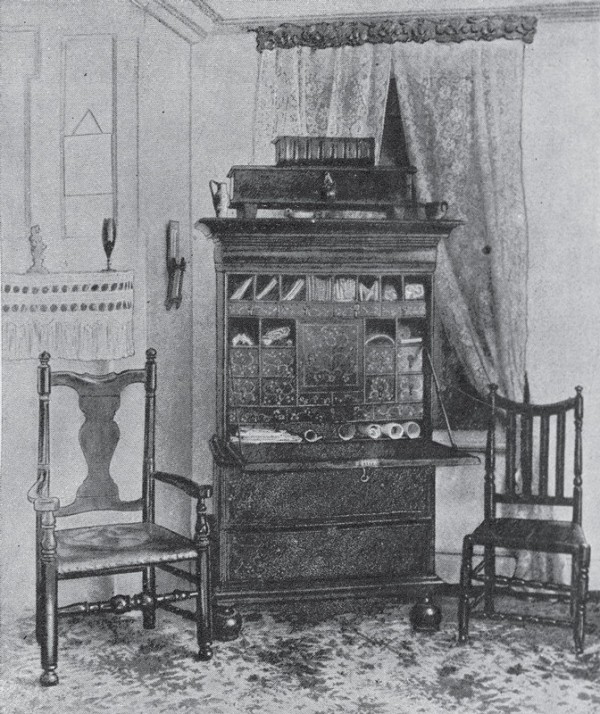
Photograph of the Brinckerhoff scrutoir from The Family of Joris Dircksen Brinckerhoff, 1638 (New York: Richard Brinkerhoff Publisher, 1887).

Scrutoir stamped “Edward Evans/1707,” Philadelphia, Pennsylvania, 1707. Black walnut with white cedar and yellow pine. H. 66 1/2", W. 44 1/2", D. 19 1/4". (Courtesy, Colonial Williamsburg Foundation.)
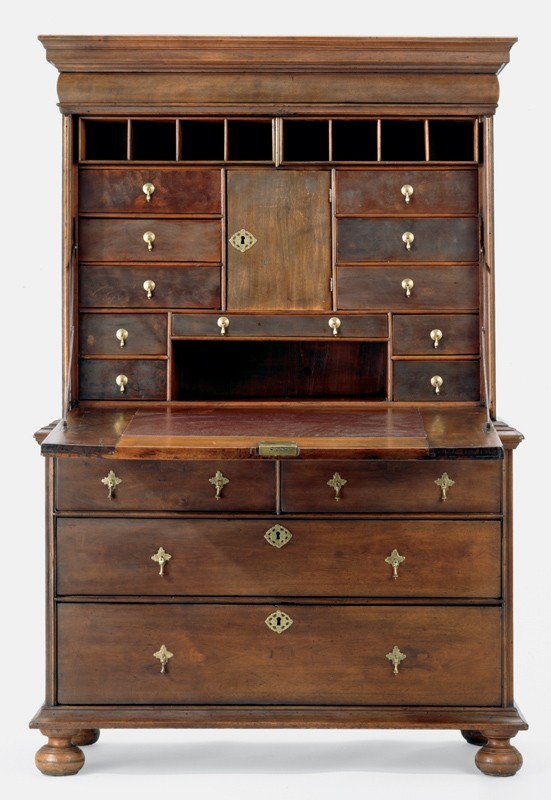
Scrutoir illustrated in fig. 3 with the fall front open.
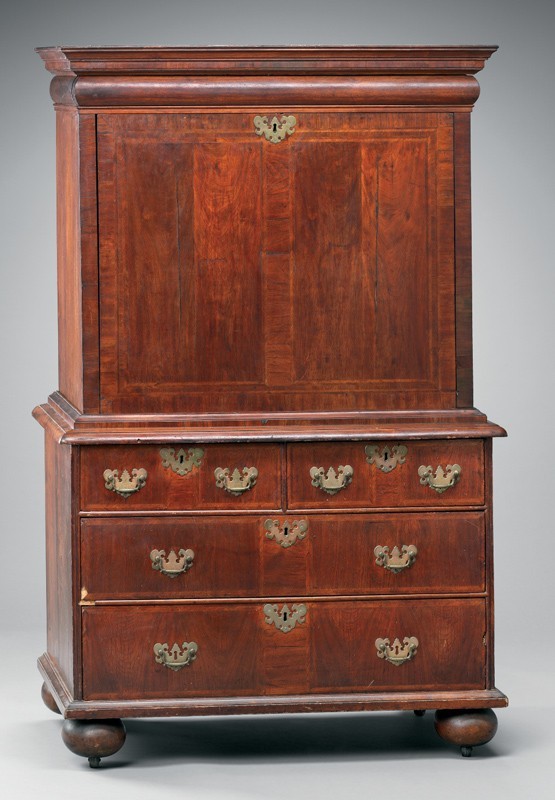
Scrutoir, Rhode Island, 1700–1730. Walnut and walnut veneer with chestnut and white pine, H. 66", W. 39 3/4", D. 18 1/2". (Courtesy, Museum of Fine Arts, Boston.)

Scrutoir illustrated in fig. 5 with the fall front open.
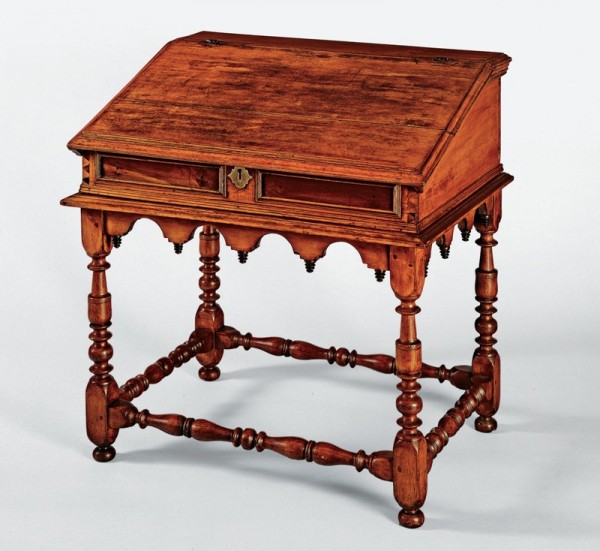
Desk-on-frame, New York City or vicinity, New York, 1695–1720. Sweet gum and mahogany veneer with yellow poplar. H. 35 1/4", W. 34 1/2", D. 24 1/8". (Courtesy, Metropolitan Museum of Art.)

Desk, New York or Rhode Island, 1700–1730. Black walnut, unidentified burl veneer, and Cuban oyster wood (interior drawer pulls) with white pine, black walnut, yellow poplar, and cherry. H. 41 1/4", W. 36 1/4", D. 19 5/8" (closed). (Courtesy, Museum of Fine Arts, Houston, Bayou Bend Collection.) This desk is catalogued as New York by Bayou Bend but after the discovery of the Child scrutoir (see figs. 5 and 6) is now considered by some scholars to be of Rhode Island origin.

Detail of the interior of the scrutoir illustrated in fig. 1, showing its original long iron hinges, secret drawers removed, and hinged top board for a secret compartment open. (Photo, Gavin Ashworth.)

Scrutoir, England, ca. 1695. Walnut, burl elm, and seaweed marquetry; secondary woods not recorded. H. 65", W. 46", D. 19 1/2". (Private collection; photo, courtesy Millington Adams Ltd., Knutsford, Cheshire, Eng.) This scrutoir is illustrated in Percy MacQuoid’s Age of Walnut (1905). The turned feet and drop handles are restored.
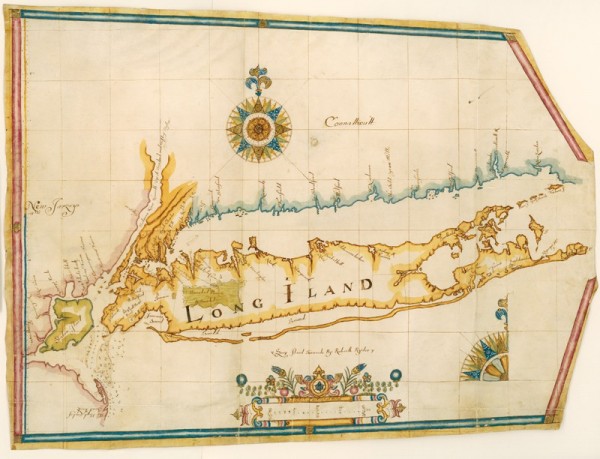
Robert Ryder, Long Iland Siruade by Robartte Ryder (London, [1679?]). 23 3/4" x 31 5/8". (Courtesy, John Carter Brown Library at Brown University.)
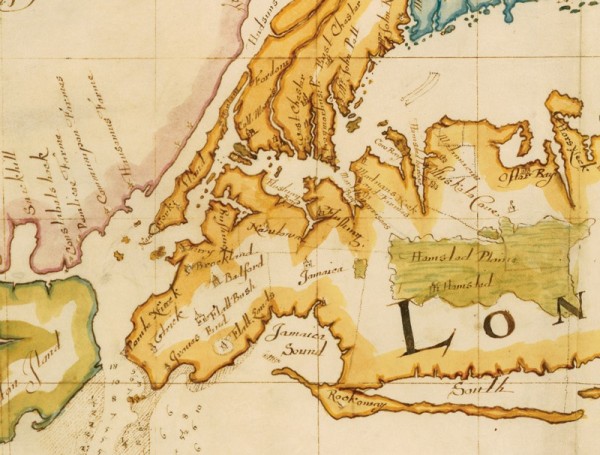
Detail of the map illustrated in fig. 11, showing the town of Newtown and Flushing Bay.
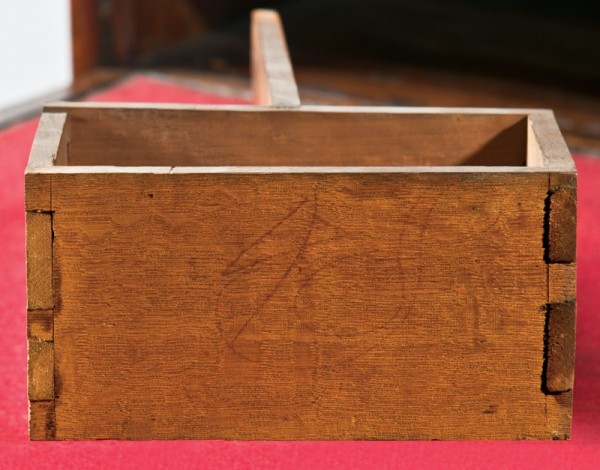
Detail of the secret drawer from the scrutoir illustrated in fig. 1. (Photo, Gavin Ashworth.)
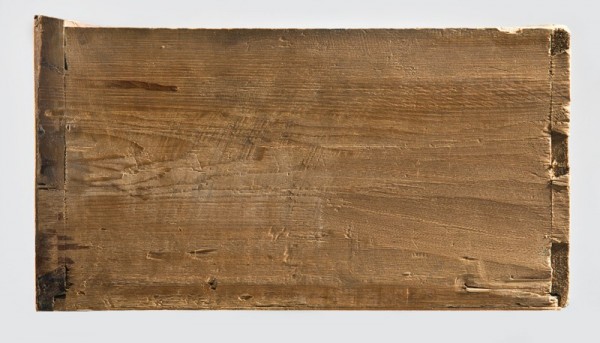
Detail of the side of a drawer from the scrutoir illustrated in fig. 1. The front, sides, and rear boards are rabbeted on their lower inside edge, and the bottom is nailed into the rabbets on all four sides. Walnut banding on the drawer front covers the end grain of the dovetails, while the steep pitch of the top edge is a feature characteristic of the drawers in New York kasten. (Photo, Gavin Ashworth.)
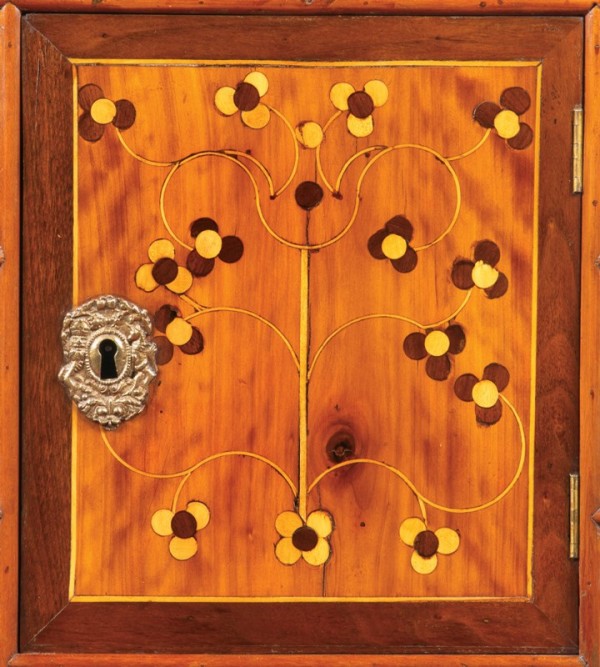
Detail of the central interior door of the scrutoir illustrated in fig. 1, showing the cast brass keyhole escutcheon. (Photo, Gavin Ashworth.)
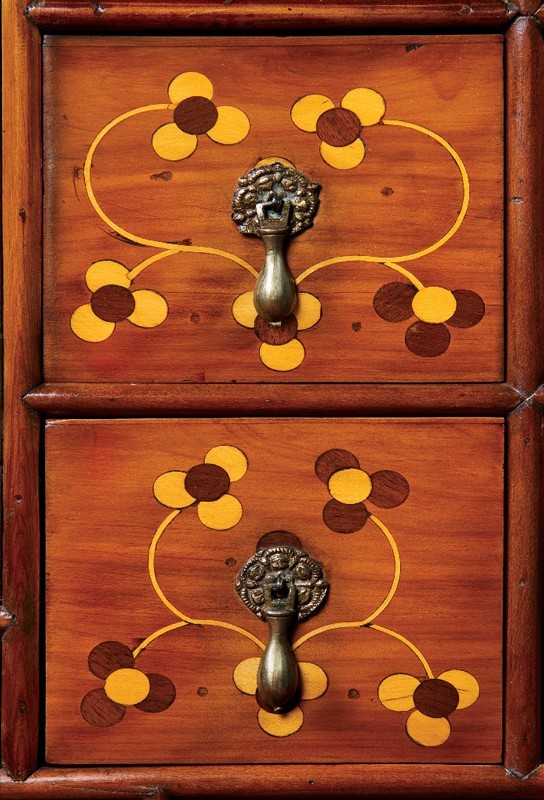
Detail of two interior drawers of the scrutoir illustrated in fig. 1, showing the original pulls with cast brass backplates. (Photo,Gavin Ashworth.)

Plate from Andrea Palladio, The First Book of Architecture, translated from the Italian with an appendix on doors and windows by Pierre Le Muet (1591–1669). Translated into English by Godfrey Richards (London: Eben. Tracy, 1716).
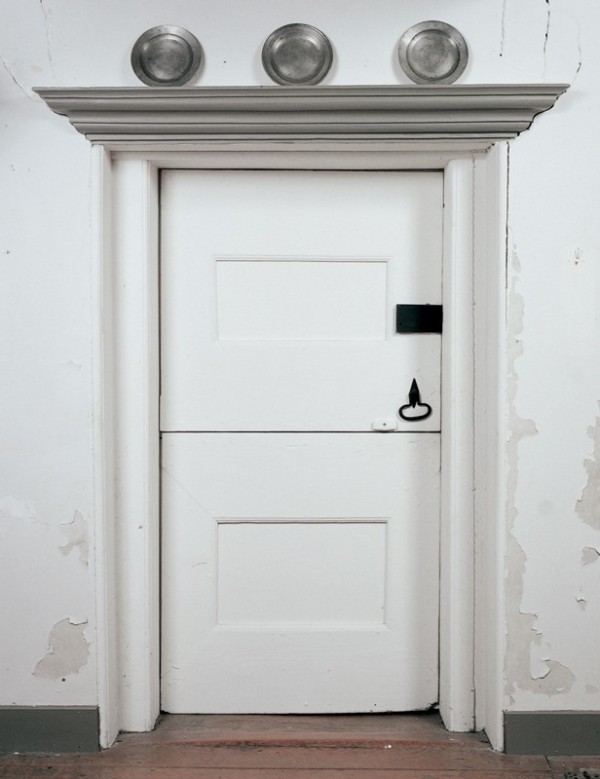
Interior doorway in the Pieter Bronck House, Coxsackie, New York, 1700–1738. (Courtesy, Bronck Museum, Greene County Historical Society, Coxsackie; photo, Gavin Ashworth.)
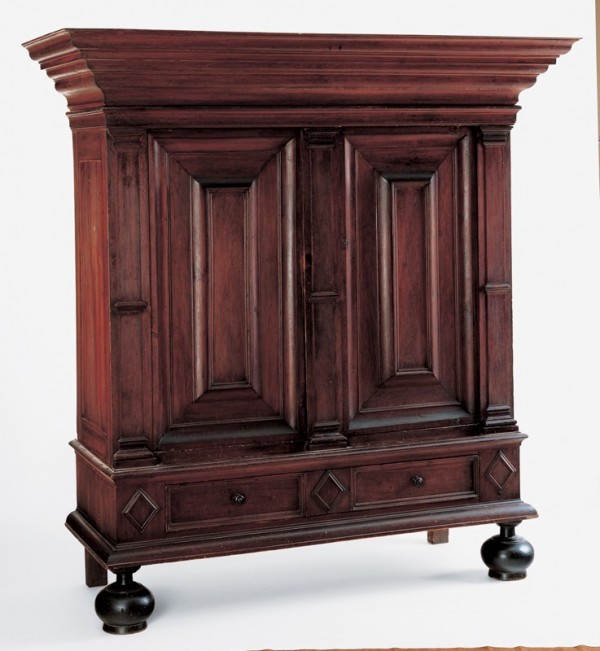
Kast, Albany, New York, 1710–1735. Gum with tulip poplar and white pine. H. 78 1/2", W. 75 7/16", D. 29 1/2". (Private collection; photo, Gavin Ashworth.)

Detail of the cornice of the scrutoir illustrated in fig. 1. (Photo, Gavin Ashworth.)
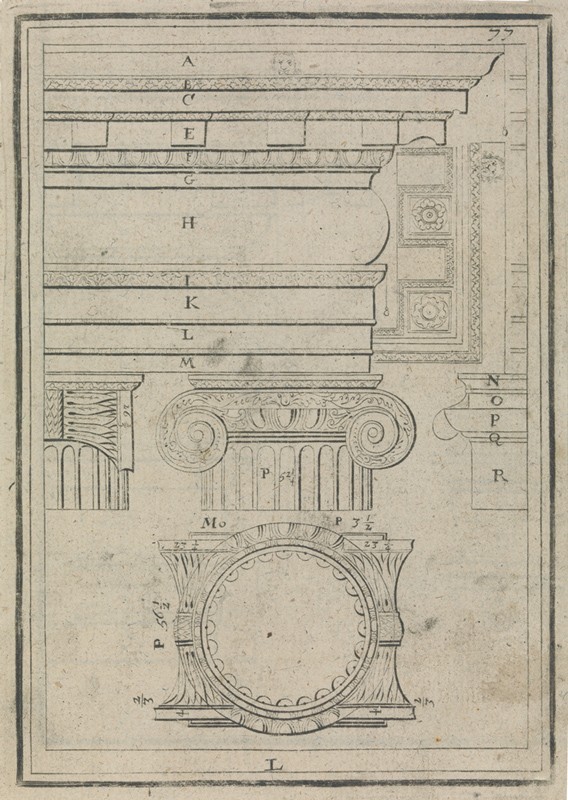
Tavola IX, Capitello, e cornicione Dorico, from Regola delle cinque ordini d’architettura di Giacomo Barozzi da Vignola (Rome, 1563). (Courtesy, Metropolitan Museum of Art.)
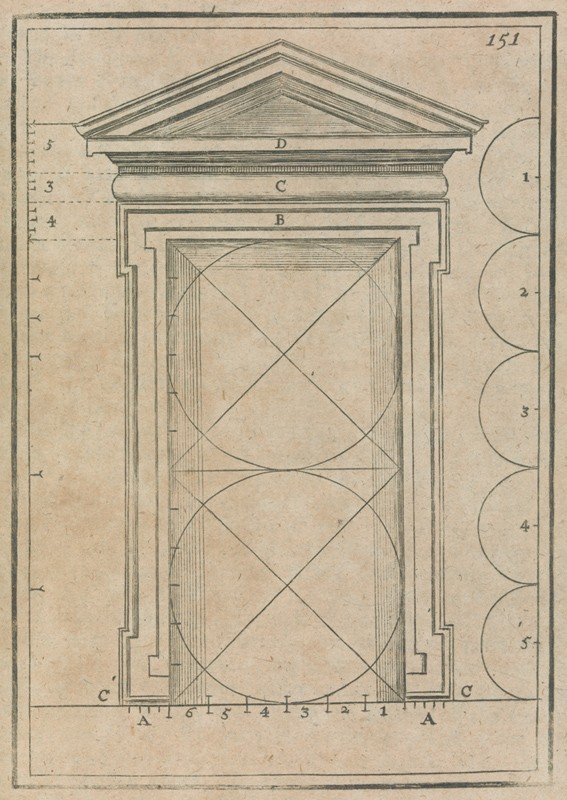
Plate showing an entablature in the Ionic order from The First Book of Architecture by Andrea Palladio Translated out of Italian...by Godfrey Richards (London: James Knapton, 1721). (Courtesy, Metropolitan Museum of Art.)

Back of the scrutoir illustrated in fig. 1. (Photo, Gavin Ashworth.)
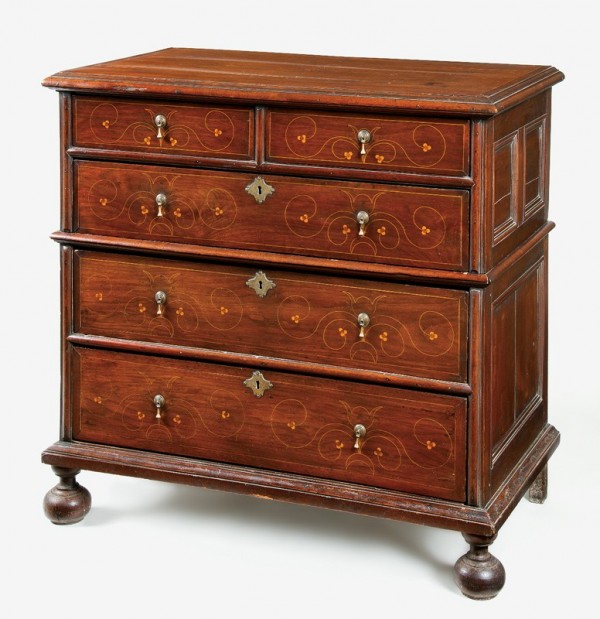
Chest of drawers, southeastern Pennsylvania, 1710–1735. Walnut with white cedar, yellow pine, and oak. H. 41 1/2", W. 42 5/8", D. 23 3/4". (Private collection; photo, Gavin Ashworth.) The chest is made in two parts.

Detail of the top of the chest of drawers illustrated in fig. 24. (Photo, Gavin Ashworth.)
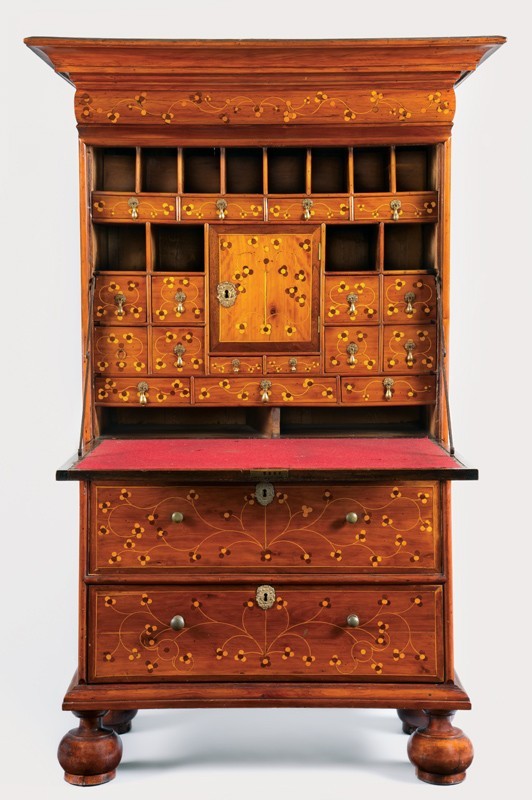
Scrutoir illustrated in fig. 1 with the fall front open. (Photo, Gavin Ashworth.)
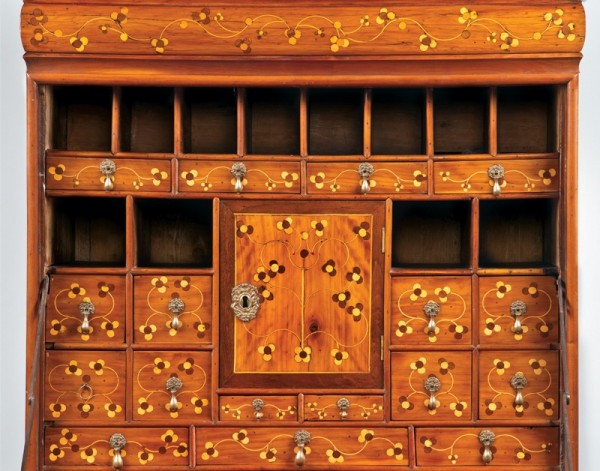
Detail of the interior of the scrutoir illustrated in fig. 1. (Photo, Gavin Ashworth.)
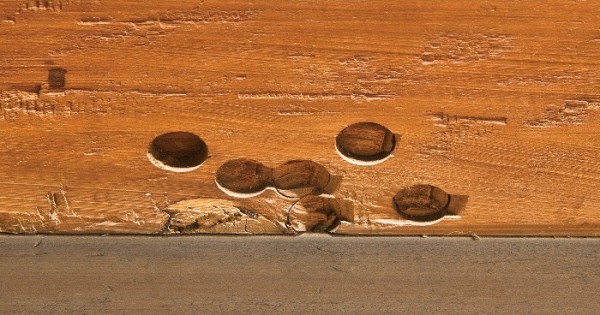
Detail of the back face of the lower drawer in the scrutoir illustrated in fig. 1, showing circular recesses cut with an incannel gouge. (Photo, Gavin Ashworth.)

Detail of the fall front of the scrutoir illustrated in fig. 1. (Photo, Gavin Ashworth.)
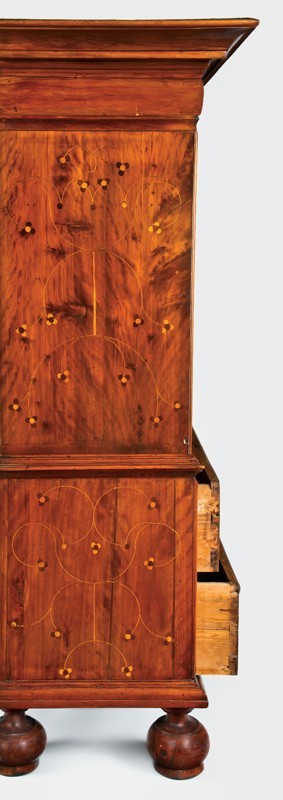
Left side of the scrutoir illustrated in fig. 1. (Photo, Gavin Ashworth.)
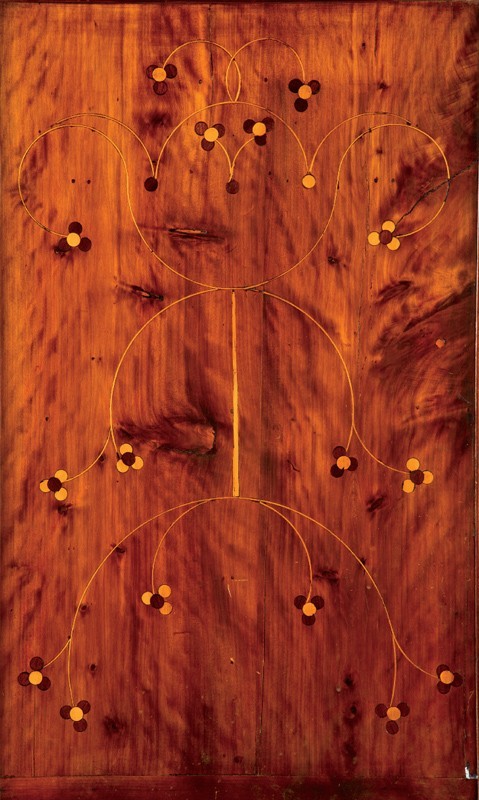
Detail of the figure inlaid into the left side of the upper case of the scrutoir illustrated in fig. 1. (Photo, Gavin Ashworth.)
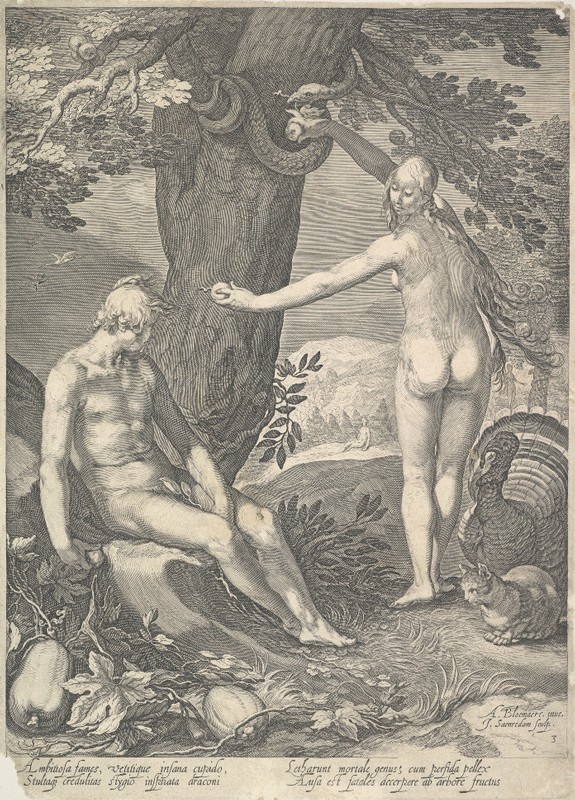
Jan (Pietersz.) Saenredam (ca. 1565–1607) after Abraham Bloemart (1566–1651). Adam and Eve. Engraving. 11" x 7 15/16". (Courtesy, Metropolitan Museum of Art.)
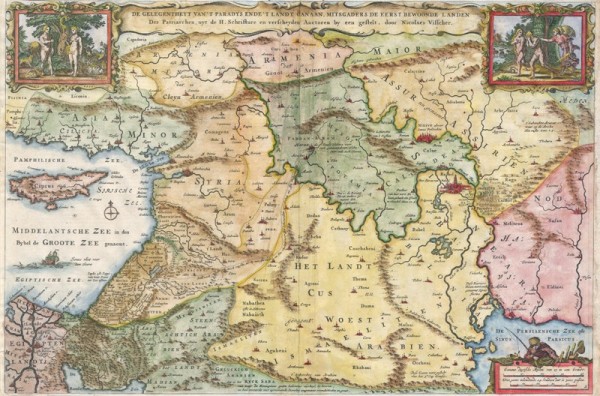
Nicolaes Visscher I (1618–1679), Earthly Paradise or the Garden of Eden, map drawn for inclusion in Abraham van den Broeck’s Dutch Staten Bible, 1657. (Courtesy, Geographicus.)
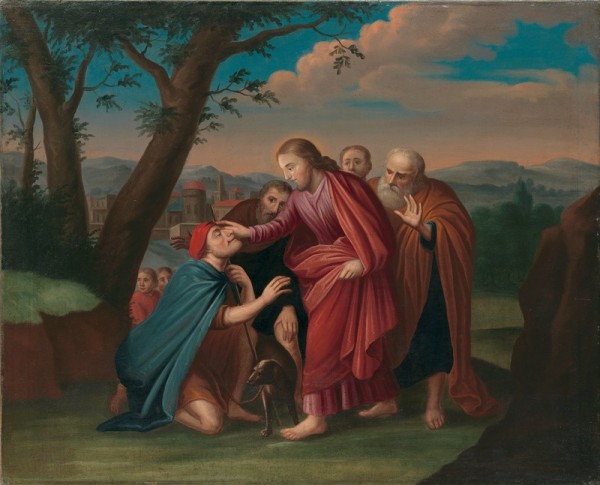
Gerardus Duyckinck I (1695–1746), Christ Healing the Blind Man, ca. 1725–1730. Oil on canvas, 35 1/4" x 45". (Courtesy, Metropolitan Museum of Art.)
